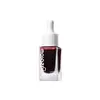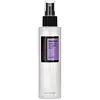What's inside
What's inside
 Key Ingredients
Key Ingredients

 Benefits
Benefits

 Concerns
Concerns

 Ingredients Side-by-side
Ingredients Side-by-side

Water
Skin ConditioningGlycerin
HumectantGlycereth-26
HumectantGlycolic Acid
BufferingPEG-12 Dimethicone
Skin ConditioningPolysorbate 20
EmulsifyingNiacinamide
SmoothingPEG/PPG-17/6 Copolymer
SolventDipropylene Glycol
HumectantLactic Acid
BufferingAloe Barbadensis Leaf Water
MaskingPotassium Hydroxide
BufferingPEG-40 Hydrogenated Castor Oil
EmulsifyingPhenoxyethanol
PreservativeCitric Acid
BufferingHydroxypropyl Cyclodextrin
MaskingSalicylic Acid
MaskingCellulose Gum
Emulsion StabilisingPolyacrylate Crosspolymer-6
Emulsion StabilisingXanthan Gum
EmulsifyingInositol
Humectant1,2-Hexanediol
Skin ConditioningBeta Vulgaris Root Extract
Skin ConditioningDipeptide-15
Skin ConditioningHydroxyacetophenone
AntioxidantParfum
MaskingBrassica Oleracea Acephala Leaf Extract
HumectantMaltodextrin
AbsorbentGluconolactone
Skin ConditioningO-Cymen-5-Ol
AntimicrobialEthylhexylglycerin
Skin ConditioningButylene Glycol
HumectantPolyquaternium-51
Skin ConditioningPentylene Glycol
Skin ConditioningBeta-Glucan
Skin ConditioningHydrogenated Lecithin
EmulsifyingZinc PCA
HumectantSodium Hyaluronate
HumectantFomes Officinalis Extract
Skin ProtectingPropanediol
SolventCentella Asiatica Leaf Extract
Skin ConditioningSodium Lactate
BufferingPaeonia Albiflora Root Extract
Skin ConditioningSucrose
HumectantUrea
BufferingSodium Citrate
BufferingTartaric Acid
BufferingMalic Acid
BufferingQuaternium-73
Water, Glycerin, Glycereth-26, Glycolic Acid, PEG-12 Dimethicone, Polysorbate 20, Niacinamide, PEG/PPG-17/6 Copolymer, Dipropylene Glycol, Lactic Acid, Aloe Barbadensis Leaf Water, Potassium Hydroxide, PEG-40 Hydrogenated Castor Oil, Phenoxyethanol, Citric Acid, Hydroxypropyl Cyclodextrin, Salicylic Acid, Cellulose Gum, Polyacrylate Crosspolymer-6, Xanthan Gum, Inositol, 1,2-Hexanediol, Beta Vulgaris Root Extract, Dipeptide-15, Hydroxyacetophenone, Parfum, Brassica Oleracea Acephala Leaf Extract, Maltodextrin, Gluconolactone, O-Cymen-5-Ol, Ethylhexylglycerin, Butylene Glycol, Polyquaternium-51, Pentylene Glycol, Beta-Glucan, Hydrogenated Lecithin, Zinc PCA, Sodium Hyaluronate, Fomes Officinalis Extract, Propanediol, Centella Asiatica Leaf Extract, Sodium Lactate, Paeonia Albiflora Root Extract, Sucrose, Urea, Sodium Citrate, Tartaric Acid, Malic Acid, Quaternium-73
 Reviews
Reviews

Ingredients Explained
These ingredients are found in both products.
Ingredients higher up in an ingredient list are typically present in a larger amount.
1,2-Hexanediol is a synthetic liquid and another multi-functional powerhouse.
It is a:
- Humectant, drawing moisture into the skin
- Emollient, helping to soften skin
- Solvent, dispersing and stabilizing formulas
- Preservative booster, enhancing the antimicrobial activity of other preservatives
Butylene Glycol (or BG) is used within cosmetic products for a few different reasons:
Overall, Butylene Glycol is a safe and well-rounded ingredient that works well with other ingredients.
Though this ingredient works well with most skin types, some people with sensitive skin may experience a reaction such as allergic rashes, closed comedones, or itchiness.
Learn more about Butylene GlycolGlycolic Acid is arguably the most famous alpha hydroxy acid (AHA) with tons of research backing its benefits.
It is found naturally in sugar cane but the form used in skincare is usually synthetic for purity and stability.
Glycolic acid removes the top layer of dead skin cells to allow newer and fresher ones to emerge.
AHAs work by breaking down the structural “glue” that holds old skin cells in place. When that buildup is gone, your skin can renew itself more efficiently.
Research also shows glycolic acid stimulates collagen production, helping to firm and thicken the skin over time. This is one of its biggest advantages over other AHAs.
Overall, glycolic acid helps with:
Fun fact: Glycolic acid boosts skin hydration by helping it produce molecules that increase hyaluronic acid naturally.
To work best, glycolic acid products should have a pH between 3-4 (that’s where exfoliation is most effective but still gentle on skin).
The pH and concentration of a product are key to its effectiveness:
It is normal to feel a slight stinging sensation when using glycolic acid. This usually fades as your skin adjusts.
Because glycolic acid has the smallest molecular size in the AHA family, it can penetrate deeper, which enhances its effectiveness but also makes it more likely to irritate sensitive skin.
If your skin is very sensitive or prone to rosacea, glycolic acid may be too strong; in that case, try milder options like lactic acid or a PHA instead.
Recent studies suggest glycolic acid might even help protect against UV damage. But don’t skip sunscreen! Freshly exfoliated skin is more sensitive to the sun.
Glycolic acid is a skincare superstar. It smooths, brightens, hydrates, and firms the skin. Unless you’re highly sensitive, it’s well worth adding to your routine.
Read more about some other popular AHA's here:
Learn more about Glycolic AcidSodium Lactate is the sodium salt of lactic acid, an AHA. It is a humectant and sometimes used to adjust the pH of a product.
This ingredient is part of our skin's NMF, or natural moisturizing factor. Our NMF is essential for the hydration of our top skin layers and plasticity of skin. NMF also influences our skin's natural acid mantle and pH, which protects our skin from harmful bacteria.
High percentages of Sodium Lactate can have an exfoliating effect.
Fun fact: Sodium Lactate is produced from fermented sugar.
Learn more about Sodium LactateWater. It's the most common cosmetic ingredient of all. You'll usually see it at the top of ingredient lists, meaning that it makes up the largest part of the product.
So why is it so popular? Water most often acts as a solvent - this means that it helps dissolve other ingredients into the formulation.
You'll also recognize water as that liquid we all need to stay alive. If you see this, drink a glass of water. Stay hydrated!
Learn more about Water